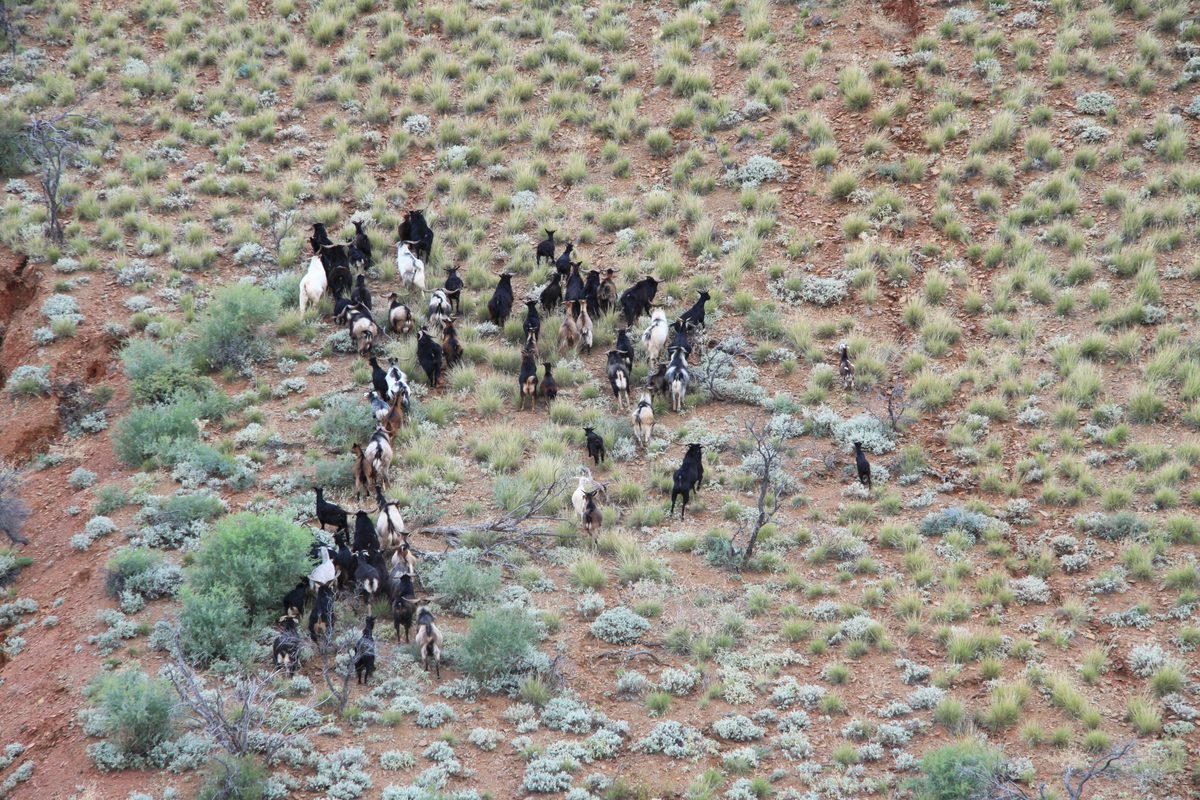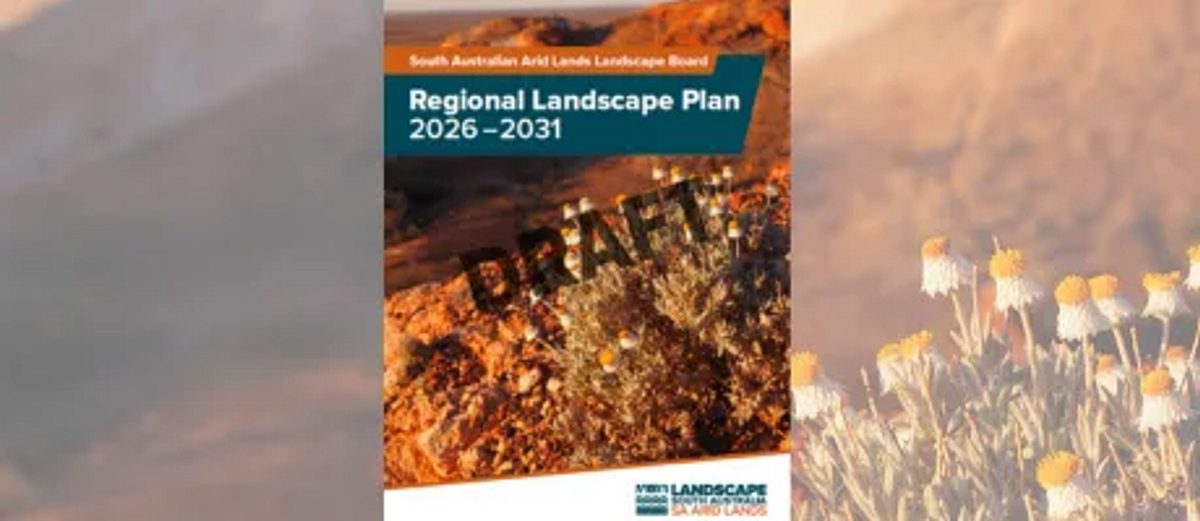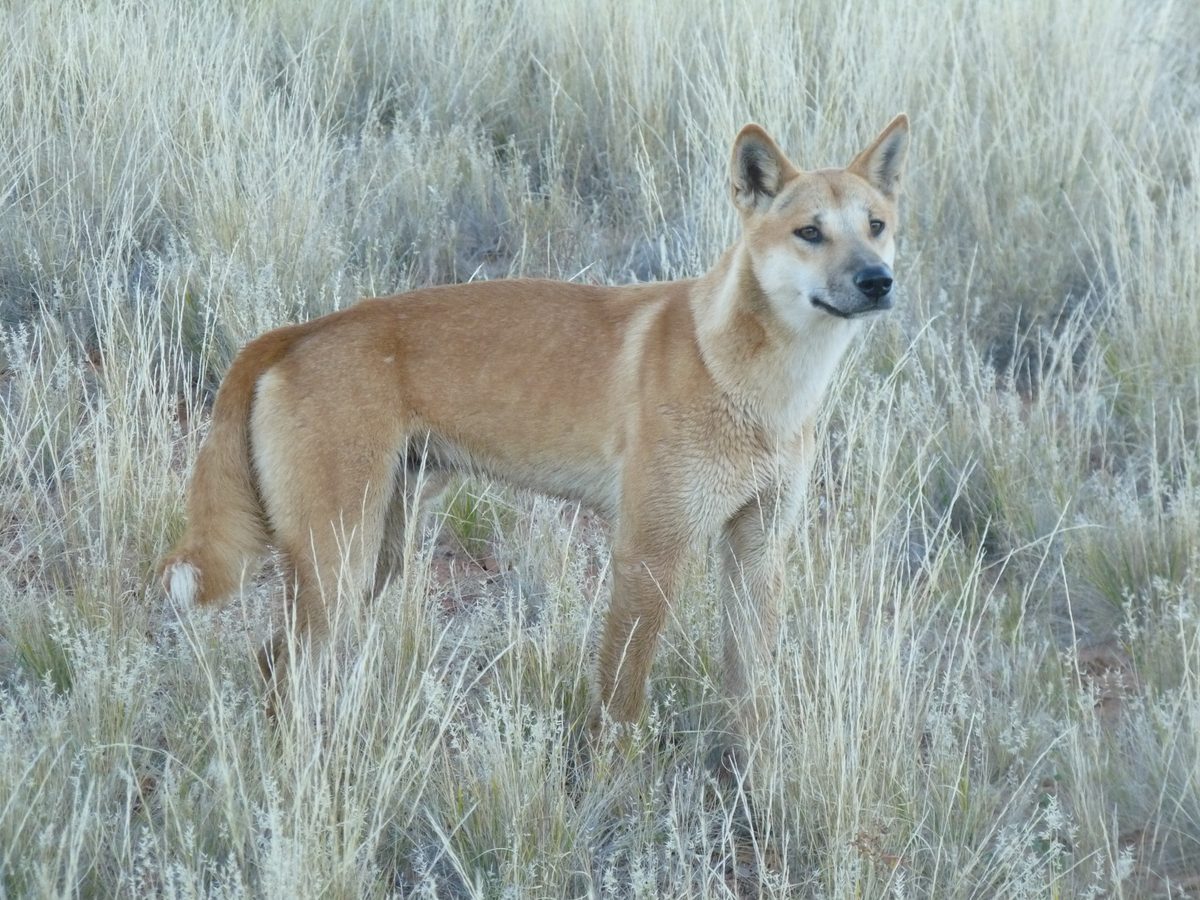Daisy hunt in Dutchman's Stern
Surveys to monitor the nationally vulnerable Superb Groundsel daisy (Senecio megaglossus) have been undertaken in the Dutchman’s Stern Conservation Park and surrounding private land near Quorn.

Four university students joined seven volunteer botanists in Dutchman’s Stern in October in a project organised by the Threatened Plant Action Group and funded by an SA Arid Lands Landscape Board Grassroots Grant. Collectively they spent 200 hours walking and traversing slippery slopes to locate, count and monitor the daisy, revisiting historical records and searching for new populations.
Green in colour with bright yellow flower heads, the long-lived shrub can grow to 1m. Mostly confined to rocky creek banks and rocky gorge and valley slopes, it grows in grasslands or tall open shrublands. Flowering from late July to November, the survey was undertaken at a time when the daisy would be easiest to find.
Known populations of the Superb Groundsel Daisy are found within the Southern Flinders Ranges and near Burra, with the largest near Quorn. A previously recorded population in the Mt Lofty Ranges is believed to be extinct, with the Threatened Plant Action Group and staff from the Seed Conservation Centre looking for it on four different occasions, with no luck.
Feral goats have damaged the plant’s natural habitat, breaking mature shrubs and destroying seedlings, leaving the soil in the steep rocky valleys prone to erosion.
The Threatened Plant Action Group says the daisy is still at great risk. More intensive and on-going goat control is needed and fencing could provide protection at one daisy site to give it a chance to rest, recover and reproduce.
The group is also exploring the role of fire in the daisy’s recovery and will work with Nukunu Wapma Thura in 2025 to develop a plan for a trial cultural and ecological burn. As part of this, further surveys will be conducted to determine the presence of the National vulnerable Short-tailed Grasswren (Amytornis merrotsyi) and if burning would pose any threats to localised populations.
Students from the Biological Society of South Australia and Nukunu Wapma Thura will assist in monitoring and surveys, gaining training in monitoring techniques.
Data captured on both the daisy and grasswren will be submitted to national and State databases and will inform conservation advice to be put forward for a new listing of the daisy as nationally endangered.


